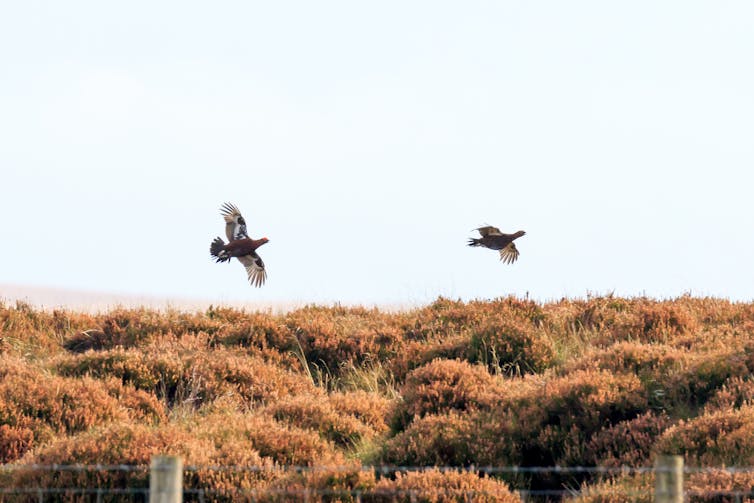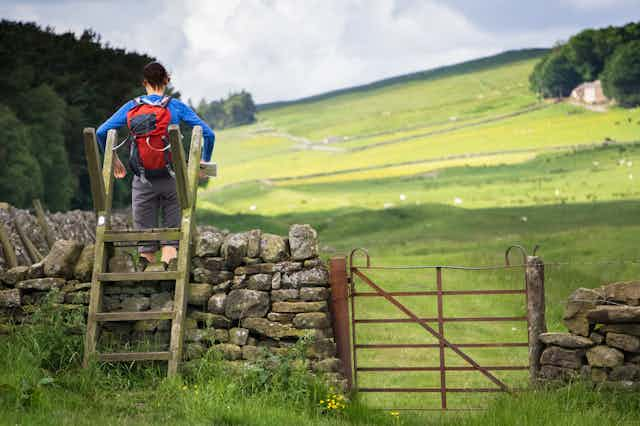The Labour Party has promised to introduce a Scottish-style right to roam over the English and Welsh countryside if elected to government. How might that change your ability to enjoy the great outdoors and what lessons does Scotland offer?
The debate over public access to the British countryside received fresh publicity in 2023 after a landowner in Dartmoor, a moorland in the county of Devon in southwest England, brought a legal challenge to the rights of wild campers to stay on his 1,619 hectare estate. While the landowner lost on appeal and the right to camp was restored, the right to camp still applies only to common land in Dartmoor National Park.
Most visitors to the countryside in England and Wales have very limited rights of access. We have a right to walk on footpaths and a “right to roam” over mountains and open countryside, but this is usually restricted to walking and does not include higher rights of access such as camping, swimming or paddling.
In fact, a visitor who exceeds the rights provided by the existing law would become a trespasser and a landowner is entitled to use “reasonable force” to eject them. Campaigners estimate that this right to roam covers just 8% of English land.
A Scottish-style right to roam would provide better access to the countryside than these existing rights and is likely to include a right to walk over a much wider range of farmland, including grazing land, and the right to wild camp, swim or paddle a boat across rivers and and other waterways.
Labour and the right to roam
It should come as no surprise that the Labour Party has thrown its weight behind the campaign for wider access to the countryside. The history of the Labour Party and the right to roam are heavily entwined.
Many of the most vocal rambling activists from the early 20th century were members of left-wing Clarion Clubs, which demanded greater rights for walkers and cyclists in the English countryside. Some form of wider access to land has been promised in every Labour Party general election manifesto published since 1950.
If Labour was to win a majority of seats at the next general election, comparisons will inevitably be drawn with Tony Blair’s landslide 1997 victory for New Labour. His government introduced a new right to roam under the Countryside and Rights of Way Act 2000 (CRoW Act). People in England and Wales gained the right to walk on mountains over 600 metres and over moorland, heathland and downland – land traditionally used by landowners for shooting game birds such as grouse and for grazing sheep.
The CRoW Act balanced a limited right of access on foot with significant powers for landowners to close their land temporarily. These compromises weakened the new right to roam, which was not extended to more accessible lowland areas, other farmland or woodland.
Opponents to a wider right to roam often cite the risk to the environment, farming and the privacy of landowners. The parliamentary debate on the CRoW Act included several contributions from members of the House of Lords who were concerned about walkers causing damage to their land.
There is some evidence that wider access since 2000, combined with a lack of investment in rangers and bins, has led to an increase in littering. Even Scottish rights of access have been limited due to concerns over fire lighting and wild camping in more accessible beauty spots such as Loch Lomond.

Supporters of wider access to the countryside can cite several examples of landowner misfeasance to demonstrate that farming and hunting are also damaging for wild and beautiful places. Recent mass trespasses of private land by campaigners have frequently included time spent picking up existing litter.
What can be learned from Scotland?
For a short time during the early 21st century, the laws on access were more generous in England and Wales than in Scotland, at least on paper. This was until the Land Reform (Scotland) Act 2003 introduced a generous and sweeping right to roam.
Scottish rights of access are based on a small number of exceptions which tell people where they cannot go, such as private gardens or crop fields, rather than the English and Welsh model which allows access on specified types of land only. This simplifies access rights and removes the need for complex signage and maps full of dead ends and no-go areas.
The Scottish Land Reform Act makes an explicit connection between wider access and cultural heritage. And in truth, the people of Scotland have always enjoyed more generous rights of access through traditions and practice. Even before the act was introduced, it was common for people to enjoy walks across open Scottish countryside without needing to follow specific footpaths. In this way, new laws simply codified an existing freedom that few landowners would have challenged.
This might suggest the key to a successful right to roam is cooperation between walkers and landowners, and the discovery of common ground. Instead of conflict between enemies, there should be agreement between different types of land users who share a common goal in the protection of the countryside.

Don’t have time to read about climate change as much as you’d like?
Get a weekly roundup in your inbox instead. Every Wednesday, The Conversation’s environment editor writes Imagine, a short email that goes a little deeper into just one climate issue. Join the 20,000+ readers who’ve subscribed so far.

